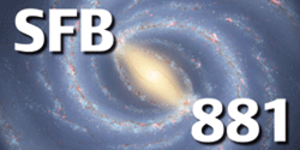Rationale
The reason why galaxies stop forming stars so efficiently once they surpass a certain mass is one of the most interesting questions in astronomy today. The best ideas in the field have gone from limiting gas accretion due to virial shocks to AGN powered outflows. However, there seem to be parts of the community that are uncomfortable with whether AGN energy can easily couple with gas trying to cool. So, we would like to understand that coupling better as well as look at other physical mechanisms that slow star formation. Recently, people have started looking at ISM processes like radiative transfer from old stellar populations (for example, Gilfanov and Woods at MPE) and disc dynamics (Martig, Meidt) as other possibilities. The workshop will give some observational background on the problem, and then try to foster discussion of the relative importance of the various processes.
The conference program will begin from our current understanding, then move onto a discussion of which current models do the best job fitting the constraints:
- Observations of Quiescent galaxies and resulting stellar mass / halo mass constraints
- AGN Feedback
- Hot and cold gas in and around massive galaxies
- Early and Late Stellar Feedback
- Other quenching/quiescence mechanisms
Some of the key questions that will be discussed include:
- Does the same mechanism quench galaxies and keep them quiescent?
- How does AGN energy couple to the gaseous halo?
- What is the most significant observed effect of AGN?
- At what distance from the AGN is the largest effect observed?
- How high does the resolution of models of AGN accretion need to be?
- Is it possible for AGN feedback to be implemented and still form realistic disks?
- Does the MBH-σ relationship imply causal connection between black holes and bulges?
- How can the cold neutral gas observed around early type galaxies not fall into galaxies and form stars?
- Can stars, particularly old stellar populations, stop star formation and keep it suppressed?


